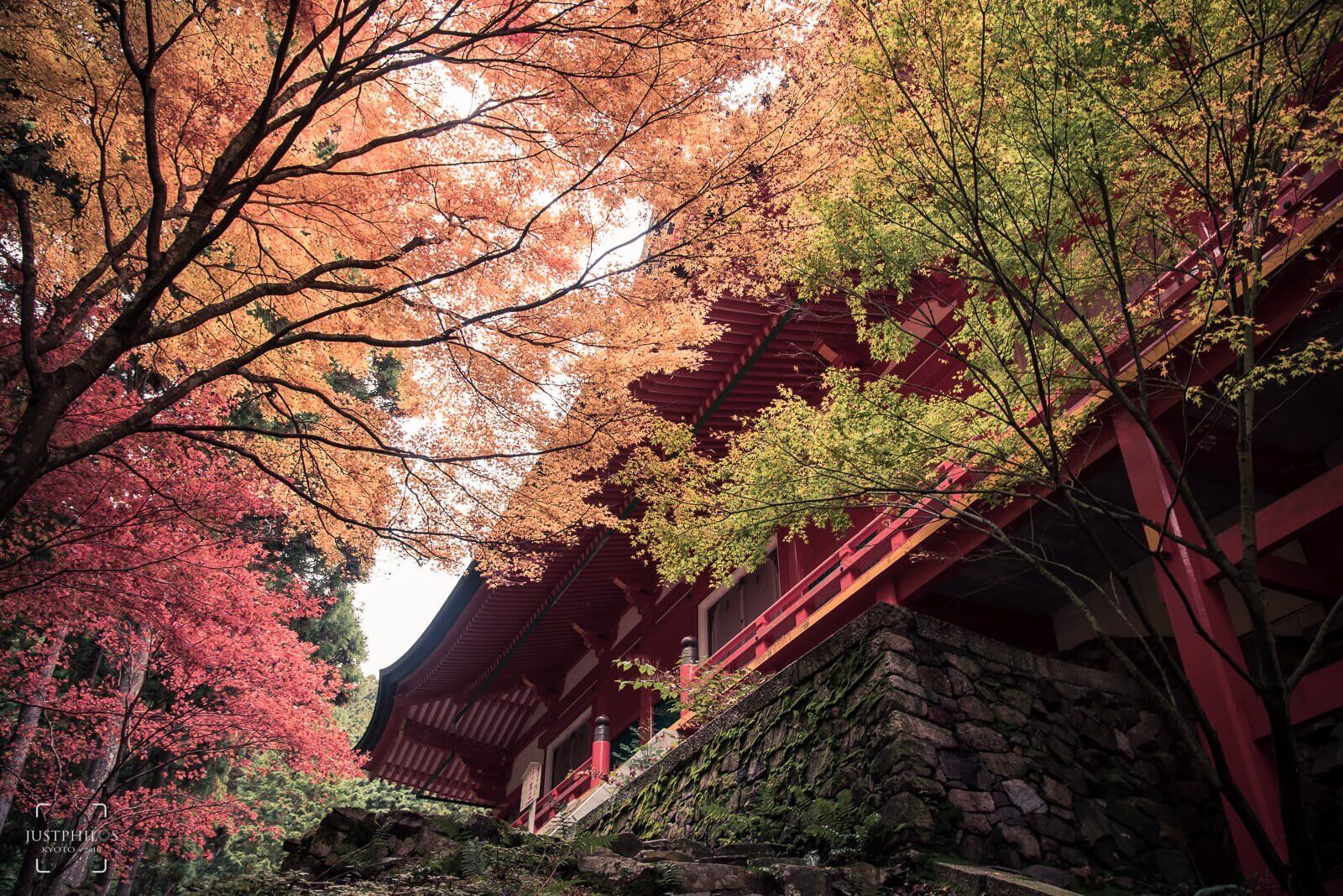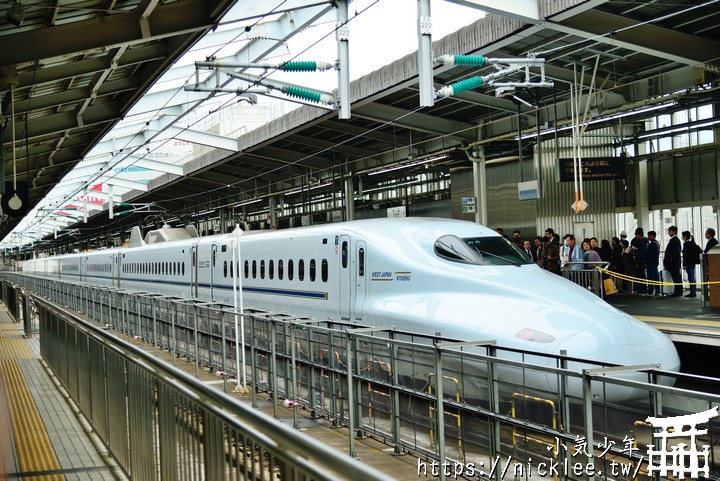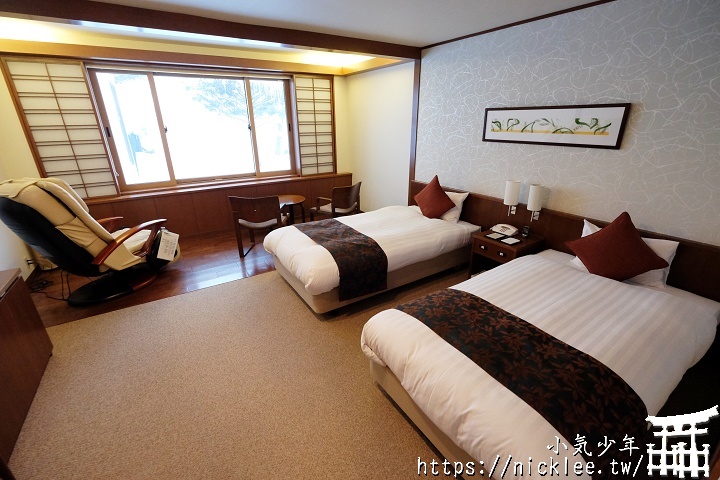Summary
There are many maple viewing spots in Japan, and Kansai is the preferred destination for many people. Mount Hiei is a mountain located in the northeast corner of Kyoto City, Kyoto Prefecture, Japan. Enryaku-ji Temple is located at the intersection of Kyoto and Shiga Prefectures, with the west side belonging to Kyoto and the east side belonging to Shiga. However, because it is not far from Kyoto City and has a relatively high altitude, it is one of the choices for maple viewing in Japan every early autumn. Mount Hiei has been regarded as a sacred mountain protecting the capital since ancient times, and Enryaku-ji Temple, which is thriving, was designated as a World Cultural Heritage site by UNESCO in 1994. Enryaku-ji Temple on Mount Hiei includes three towers and sixteen valleys. The three towers are the East Tower, West Tower, and Yokogawa, and because it covers a large area, it is usually referred to as Mount Hiei. There are many ways to go up Mount Hiei, and there are corresponding transportation options from Kyoto or Shiga. However, because I chose to go up the mountain from Kyoto this time, I will not elaborate on the Shiga part in this article. If you are interested, you can refer to the article “How to Go to Mount Hiei” by Xiao Qi Shao Nian.
It is important to do your homework before going up Mount Hiei, otherwise you will waste a lot of money. Because this time we simply visited the three towers of Mount Hiei, we chose to use the “Mount Hiei One-Day Pass”. For those who want to go down the mountain from Shiga, they can choose the “Mount Hiei Cross Pass”.
▼ Comparison of Mount Hiei One-Day Pass and Cross Pass (Image from Keihan Electric Railway official website)

Let’s take a look at the scope of use of the Mount Hiei One-Day Pass:

According to the Keihan Electric Railway official website, the Mount Hiei One-Day Pass includes the following:
| [Keihan Electric Railway] All lines (excluding Keiji Line, Ishiyama Sakamoto Line, and Oyama Cable Car)[Eizan Electric Railway] From Demachiyanagi to Hase-Eizan Station[Eizan Cable Car (Mountain Climbing Car)] Cable car from Hase Station to Eizan Station
[Eizan Aerial Cableway] Aerial cableway from Eizan Station to Mount Hiei Summit [Mount Hiei Circulating Bus] From Mount Hiei Summit to Higashito, Enryaku-ji, Nishito, Yokogawa |
The sales period is different every year, so if you plan to use it, it is recommended to check the Keihan Electric Railway official website first. The cost is 2,100 yen for adults and 1,050 yen for children.
(Note: According to the information I found before the trip, there seems to be a discounted fare for different boarding points, but based on my actual purchase experience, it should be a fixed 2,100 yen)
If you calculate the fare for each section carefully, you will find that the cost of purchasing the Mount Hiei One-Day Pass is much cheaper than buying individual tickets for each section. Therefore, if you want to arrange a one-day trip to Mount Hiei, it is a convenient and cost-effective choice. The Mount Hiei One-Day Pass is sold at various Keihan Electric Railway stations (excluding Demachiyanagi Station, Keiji Line, Ishiyama Sakamoto Line, and Oyama Cable Car); you can purchase it whenever there are station staff available.
In addition, there are two points to note when purchasing:
1. The one-day pass is only valid on the day of purchase.
2. It does not include the tour ticket for Enryaku-ji Temple (different from the Cross Pass).
▼ This is the Mount Hiei One-Day Pass we used this time

We purchased it from the ticket office next to the ticket gate at the Shichijo Station of Keihan Electric Railway. (If you are worried about the language barrier, you can also write it down on paper or show the photo of the ticket to the staff). Since the Cross Pass is also purchased at the same place, be careful not to buy the wrong one. After purchasing, just insert the ticket into the ticket gate and enter the station. It takes about 10-15 minutes by train to reach the “Demachiyanagi” station.
▼ Follow the signs to reach the Eizan Electric Railway platform at the Demachiyanagi Station.

▼ After entering the station, the Eizan Electric Railway platform is on the left side, and the platform on the right side is for the direction to Kurama and Kibune. Be careful not to take the wrong side.

It takes about 15 minutes to take the train from Demachiyanagi to Hase-Eizan. If you accidentally take the wrong train, you can change trains at the “Hoichi” station.
▼ As a tourist, I couldn’t help but take a photo of the station sign as a souvenir.

▼ The appearance of the Hase-Eizan Station is very retro.

After leaving the station, follow the signs and cross the bridge. You will encounter two roads in different directions. The left side leads to the direction of the Eizan Cable Car, and the right side leads to Ruriko-in Temple.
▼ Because it was raining and the condition of the autumn leaves was not good, we decided not to visit Ruriko-in Temple, which was already crowded with tourists before it even opened.

From here, it is considered officially entering the Mount Hiei area. Although it feels like there are many transfers, the actual time from Shichijo to here is only about half an hour. For the Mount Hiei transportation timetable, it is recommended to check online to save waiting and transfer time.
Mount Hiei Transportation Timetable (including Eizan Cable Car, Eizan Aerial Cableway, Mount Hiei Circulating Shuttle Bus)
▼ The boarding place for the Eizan Cable Car (Eizan Cable Car) is shown here. Just show the ticket to the station staff if you are using the Mount Hiei One-Day Pass.

▼ The Eizan Cable Car is designed with a tilted angle due to the slope.

▼ The Eizan Cable Car operates by pulling the train up the mountain with a steel cable. I think the maximum climbing angle is about 45 degrees, which is really incredible.

▼ There are only two cable cars crossing each other on the entire route, and they are fixed in a place where there are two parallel tracks.

The entire cable car journey takes about 10 minutes, and the train attendant constantly provides guidance and explanations, but because they are all in Japanese, I couldn’t understand XD.
▼ The final stop of the cable car is Keibel Hiei, which is actually a very simple station.

Because this is just a transfer station, after exiting the exit, you can see the Eizan Aerial Cableway station. The timing here is quite accurate in terms of scheduling. If you don’t want to linger too much, theoretically you can smoothly catch the connecting time.
▼ This is the Eizan Aerial Cableway, which is similar to the design of our Wulai Cable Car, and the space in the car is not large.

▼ When going up the mountain, because it was raining, the view of Kyoto City in the distance was hazy.

After taking the Eizan Aerial Cableway to the mountaintop, it takes about 7-10 minutes to reach the Mount Hiei Summit Bus Stop following the signs. Here, you can take the Mount Hiei Circulating Shuttle Bus or take a bus to Kyoto City.
You can refer to the following image (image from the Mount Hiei official website)

The light blue line segment (Mount Hiei Circulating) in the image is the range covered by the Mount Hiei Circulating Shuttle Bus, including the section from Mount Hiei Summit to Yokogawa. The middle section, including the East Tower, Enryaku-ji, West Tower, and Yokogawa, can be disembarked. (The East Tower and Enryaku-ji are in the same area, just different entrances); if you have purchased the Mount Hiei One-Day Pass, you can show it to the bus driver when disembarking, and there is no limit to the number of rides. From the image, you can also see that among the three towers of Mount Hiei, Yokogawa is the farthest. It takes about 20 minutes by bus from Mount Hiei Summit to Yokogawa. If you plan to spend a whole day on Mount Hiei, it is recommended to start with Yokogawa, which is the farthest.
▼ The Mount Hiei Circulating Shuttle Bus is operated by Keihan Bus. If you don’t have the One-Day Pass, you need to purchase a separate ticket when boarding.

When taking the Mount Hiei Circulating Shuttle Bus, the boarding and alighting locations are the same, so be careful to check the direction displayed on the LED in front of or beside the bus. If you take it from Mount Hiei Summit, you should look for the one going to West Tower and Yokogawa. The bus stop also indicates the direction and timetable. Because there is a bus every 20-30 minutes, if you want to complete the itinerary of the three towers, it is recommended to pay attention to the time.
Yokogawa
As mentioned earlier, Yokogawa is the farthest among the three towers of Mount Hiei, and Yokogawa Chudo is the most famous.
▼ Take the bus all the way to Yokogawa. Because this is the terminal station of the shuttle bus, it only goes in one direction, which is towards Mount Hiei Summit.

▼ Maybe because the temperature difference between day and night in the Yokogawa area is relatively large, it is the place where the maple leaves turn red the fastest among the three towers.

▼ The entrance of Yokogawa, you can buy the visit ticket for the three towers at the ticket booth on the right side, and you can save 50 yen with the Mount Hiei One-Day Pass.

▼ Speaking of early November, the condition of the autumn leaves in Yokogawa is already quite good.

▼ The main building of Yokogawa, Yokogawa Chudo, should be very beautiful if all the leaves are red.

▼ After climbing up the stairs, you can see the front of Yokogawa Chudo.

▼ That day, the temperature on the mountain was only 8 degrees, plus the rain, it was quite cold.

To be honest, the area of Yokogawa is quite large. In addition to Yokogawa Chudo, there are also places like Keishindo and Shikikodo. It may take more than 2 hours to explore the entire area. If, like us, you only visit Yokogawa Chudo this time, it will take about 1 hour.
West Tower
After leaving Yokogawa, take the shuttle bus to West Tower; (I heard that you can walk, but it takes 15 minutes by bus, so it is recommended to consider the time). The West Tower area is a bit smaller, mainly including Shaka-do, Jogyo-do, and Hokke-do, and it can be explored in about 40 minutes.
▼ The entrance of West Tower

▼ On the left is Jogyo-do, and on the right is Hokke-do, which is said to be related to Benkei.

▼ Shaka-do in West Tower, a huge building in the mountains, and the giant trees next to it are also spectacular.

▼ Another angle, there are fewer tourists in the West Tower area, so it appears more peaceful and quiet.

East Tower
Enryaku-ji Temple’s East Tower is also the main area of Mount Hiei, because it covers a large area and has many architectural features. If you want to explore it thoroughly, it is recommended to allocate 2.5 to 3 hours. If you don’t want to visit Yokogawa and West Tower, you can focus on the East Tower.
▼ After taking a short break in the East Tower, the weather suddenly cleared up.

▼ Entrance of Enryaku-ji Temple’s East Tower (near the parking lot), there are obviously more tourists here compared to the other two towers.

▼ Main Lecture Hall, moved here in 1964 from the Sanbutsudo Hall in Sakamoto by Sakamotozan Butsudo.

▼ Bell tower next to the Main Lecture Hall, many people ring the “Good Luck Bell” here, and it costs 50 yen each time.

▼ The autumn leaves next to the bell tower are very beautiful, and they are very eye-catching.

▼ This is the entrance stone monument of the main hall of the East Tower of Enryaku-ji Temple.

▼ The main hall of the East Tower, which has been destroyed several times (including the famous Mount Hiei fire), was rebuilt by Tokugawa Iemitsu in 1642.

▼ Unfortunately, it was under renovation when I visited (photography is also prohibited inside).

▼ Daikokudo, where the main deity Daikokuten is enshrined.

▼ There are some areas in the East Tower where the maple leaves turn red earlier. Looking up and taking pictures is quite beautiful.

After leaving the area of the main hall, you can follow the signs to go to Amida-do, which is a bit far.
▼ Amida-do, rebuilt in 1937.

▼ Taking a frontal photo here in the afternoon was against the light, so I took a different angle.

▼ This is the East Tower, rebuilt in 1979.

After exploring the East Tower, return along the same path from the entrance near the National Treasure Hall and take the bus back to Mount Hiei Summit, completing the pilgrimage to the three towers. The remaining photos are some that I took on the return journey that I didn’t capture on the way there.
▼ The open-air observation deck near the Mount Hiei Summit Bus Stop, where you can overlook Lake Biwa, the largest lake in Japan.

▼ The visibility improved a lot on the return journey compared to the morning.

▼ It was close to 5 o’clock in the afternoon, and there were still people going up the cable car in the opposite direction. I don’t know why.

▼ This is the passage between the cable car and the mountain climbing car. The shops next to it sell throwable items. It is said that throwing them into the distant circle can eliminate bad luck.

▼ A photo of the Yase-Hieizan-guchi Station on the return journey. It was already quite dark in the mountain area at around 5 o’clock.

Finally, here is a summary of the itinerary:
- Before going up Mount Hiei, you can do some research related to Japanese history, which can help you understand the history of Mount Hiei.
- In addition to the East Tower and Hodo, there are shops where you can eat in other areas of Mount Hiei, but the rest of the places only have small shops (it seems that there is no shop in the West Tower). It is recommended to bring food from the foot of the mountain to make it more convenient to go up the mountain.
- The earliest departure time for the shuttle bus at Mount Hiei Summit is 10 am. If you want to go up the mountain earlier, it is recommended to take the Keihan bus directly from Kyoto Station, which can go directly to the East Tower. Start from the East Tower.
- If you want to thoroughly explore the three towers, you need to consider the last bus departure time and your physical strength.





